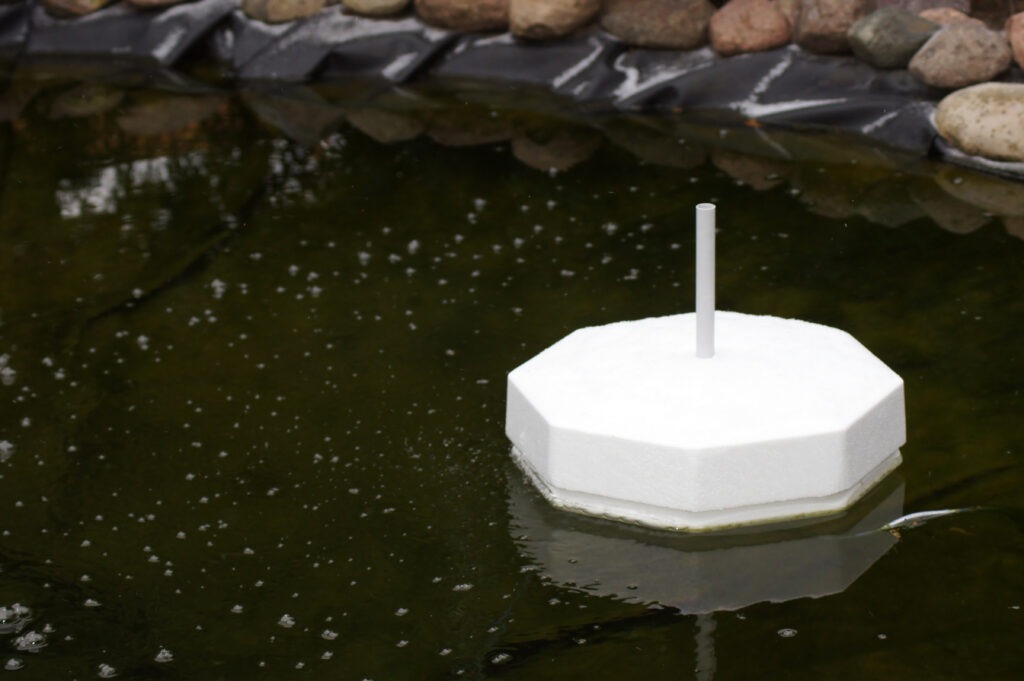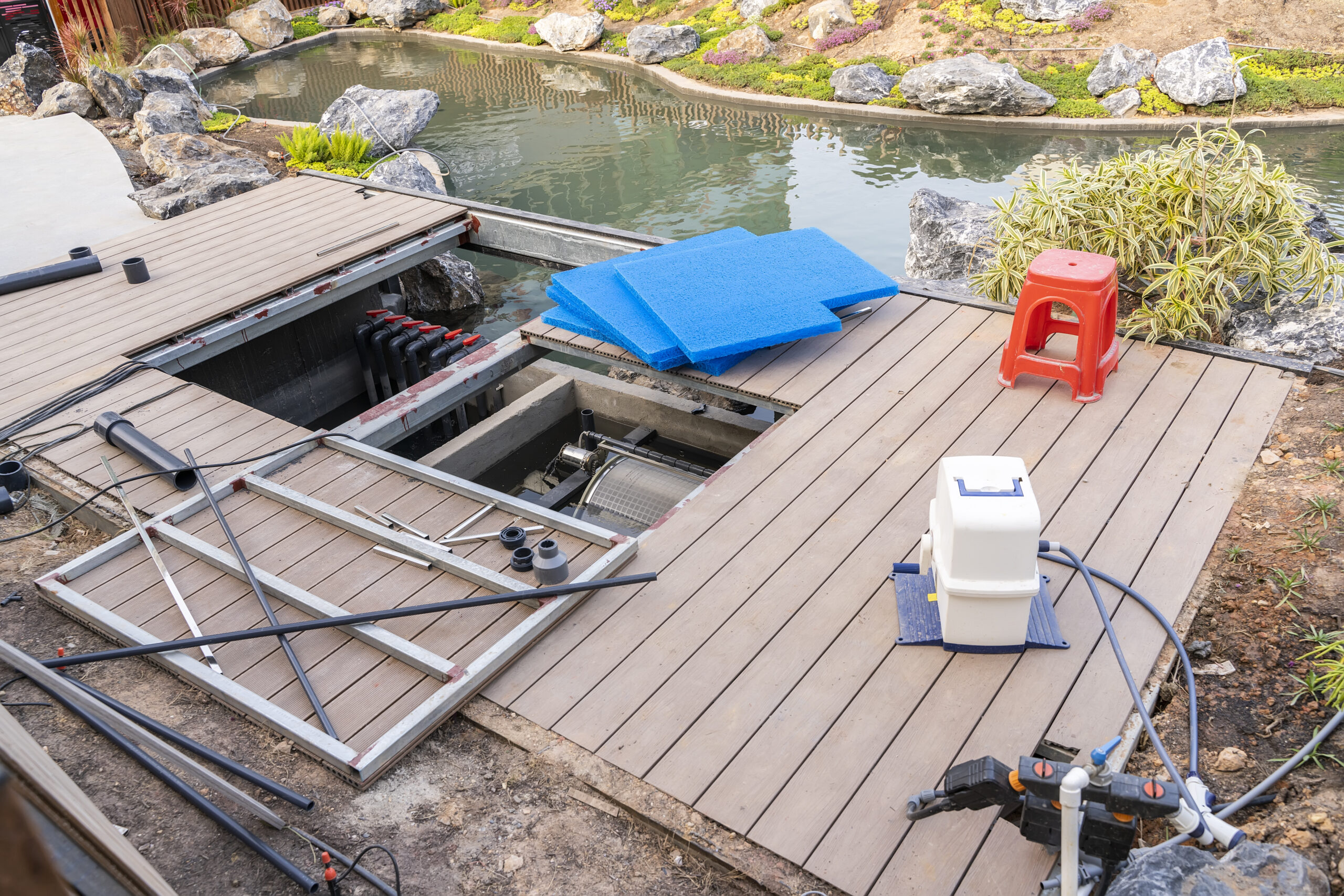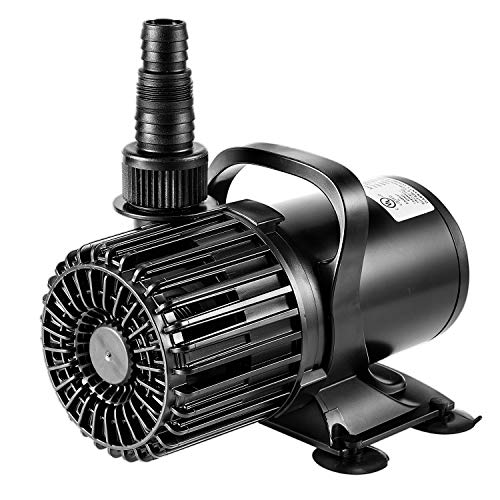Koi ponds are a great way to add beauty and tranquility to your outdoor space. But they require some maintenance. Knowing what size pump you need for your koi pond is important in keeping the water healthy and clear.
In this blog post, we’ll look at the basics of pump sizing for koi ponds so you can make sure your pond has the right equipment for success.
Step 1: Calculate the Volume of the Pond
To determine the pump size you need, the first step is to calculate the volume of your koi pond. To do this, measure the length and width of your pond in meters and multiply that number by the average depth of your pond. Then, multiply that total by 785 to get the total volume in liters.
You can also use a meter to measure the water in your pond – subtract the ending number on the meter from the beginning number. If you’re using cubic feet, you’ll need to multiply that number by 7.5, and if you have a pond with a more intricate shape, try to get an approximate estimate with your measurements.
Step 2: Determine the Flow Rate Needed
The next step in determining what size pump you need for your koi pond is calculating the needed flow rate. To do this, you need to know the volume of water in the pond and how often you intend to filter the water.
The flow rate is determined by dividing the total volume of water in the pond by how often you intend to filter it.
On smaller ponds, it is easy to filter all the water in a much shorter time. For example, if your pond’s volume is 1585 gallons, the pump flow rate should be 792 GPH.
Additionally, when building a waterfall, the average amount of water moving over it is 1,500 GPH for every 1′ width. If your waterfall is 2′ wide, it would need a flow rate of 3,000 GPH.
Step 3: Find the Type of Pump Needed
In Step 3, you need to find the type of pump you need for your koi pond. A submersible pump may be the best option if you have a small pond with little or no fish.
However, a centrifugal pump may be the better choice if you have a larger pond with fish due to its higher flow rate and increased circulation. Magnetic drive pumps are also an option if you want a quieter, more energy-efficient solution.
Step 4: Calculate the Gallons Per Hour (GPH)
Once you’ve determined the volume of your fish pond, the next step is to calculate the gallons per hour (GPH) that you will need to pump. Generally speaking, it’s good to pump a pond’s entire contents every hour at a minimum.
For example, if you have a 500-gallon pond, you will need a pump that runs 500 gallons per hour at the discharge height. For a larger pond, such as one with 1,500 gallons, you should choose a pump that runs 1,500 GPH as a minimum.
If your pond has a pressurized filter system, then you should use the flow rate for the filter to determine how much water should be circulating in your pond. For waterfalls and other water features, the flow rate should be at least half of what is recommended for the filter system.

Step 5: Determine the Minimum Pump Size
In Step 5, you’ll need to determine the minimum pump size for your koi pond. To do this, you’ll need to take the total volume of water in the pond and divide it by how often you want the water to circulate.
The standard recommendation is 1,000 gallons, but you may want to double that just to be safe. For example, if you have a 1,500-gallon pond, you should look for a pump with at least a 500 GPH (gallons per hour) flow rate. This will ensure that your koi pond has enough circulation to keep your fish healthy and happy.
Step 6: Choose What Type of Voltage Pump You Need
In Step 6, you’ll need to consider the type of voltage pump you need for your koi pond. To determine the right voltage, you’ll need to consider the power requirements of all the components in the pond system, including the filter and other accessories.
Most pumps come in either 110-volt or 220-volt options. Be sure to choose the correct voltage for your setup to ensure that your pump runs safely and efficiently.
Step 7: Decide on Your Flow Rate
Once you have calculated the volume of your pond and determined the flow rate needed, you can decide how flow rate is best for your pond.
For your water to cycle properly, you want to ensure that your pump provides enough flow rate to turn over the total volume of your pond at least once every two hours. This will help keep your pond healthy and balanced.
The flow rate should also be adequate to keep up with any waterfall or fountain in your pond, as well as enough to filter all the water quickly. When determining the right flow rate for your needs, it is important to remember that the pump needs to be reliable and efficient enough to run 24/7.
Step 8: Consider Your Pond and Waterfall Width
When calculating the size of the pump required for a koi pond, it’s important to consider the width of both the pond and the waterfall.
The amount of water moving through a pump will be determined by the electric motor’s power combined with the impeller’s size. To achieve a 3/4″ water thickness over the width of an 8″ wide stone waterfall weir, you would require a pump that would produce 1600 GPH (200 GPH per foot).
Additionally, measure the horizontal distance from where the pond pump would be located to the waterfall. This will help you choose a pump that can deliver an adequate flow rate and pressure for your desired waterfall design.
Step 9: Select a Pump Size and Model
Now that you know the size of the pump you need, it’s time to select a model. It is important to choose one that meets your specific needs. Consider factors such as the type of pond, water features, fish, plants, and sunlight when selecting the GPH of the pump.
When deciding on the best pump for a koi pond, it is important to consider the size of the pond and the type of filter being used.
Submersible pumps are best suited for small to medium-sized ponds with up to 800 gallons of water, while external pumps are better for larger ponds that use pressurized external filters.
Solar pumps are also a great option for climates with lots of sunshine since they do not require an outdoor electrical connection. The VIVOSUN 4500GPH Submersible Water Pump is a great choice for those looking for an affordable and reliable pump for their koi pond. For those looking for a higher-performance option, the Knife Submersible Pump is a great upgrade pick.
- Solid Construction & Overload Protection: The shaft and drive ring piece are made from silicon carbide material, reduce the attrition and increase the service life; It is totally waterproof (IPX8) and provides overload protection
- Energy Saving with Low Noise: Ultra-quiet operation design(30-40db); Less power (220W) consumption with high output (4500GPH/17000LPH) which compared to other pumps; Fits for 720 gallon pond
- High Lift with Detachable Filter: Lift height can be up to 19FT/5.8M; This pump can more than accommodate your water features with portable handle and detachable filter
Once you’ve selected your pump size and model, it’s time to install and maintain it to keep your pond healthy.
Step 10: Install and Maintain Your Pump
Once you have selected the right size and model of pump for your koi pond, installing and maintaining it properly is important. Installing the pump is a simple process but be sure to read the instructions that come with the pump carefully.
Once the pump is installed, it is important to maintain regular maintenance to ensure it is running properly and efficiently. Regular maintenance will ensure that your koi pond remains healthy and efficient.
Last update on 2022-09-11 / Affiliate links / Images from Amazon Product Advertising API





